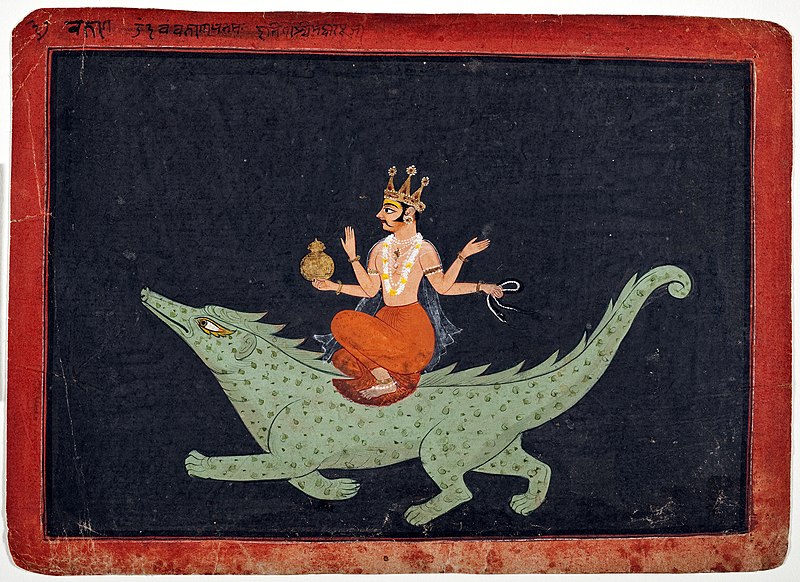
1. Sita Ram Goel on Sufism
The obsession of Hindus with Ajmer, Chishtiya Silsila and Sufis in general is very unhealthy. Some professors (from JNU & other universities) have built their career by whitewashing the history of Sufis in India & continue to do so.
The obsession of Hindus with Ajmer, Chishtiya Silsila and Sufis in general is very unhealthy. Some professors (from JNU & other universities) have built their career by whitewashing the history of Sufis in India & continue to do so.

2. Sita Ram Goel had warned in 1985 that this fatal love of Hindus for Sufis will be their ruin. It is Hindus who have kept the Sufi tradition alive in India by visiting and donating to Ajmer as well as most other dargahs. A tradition which has always wanted to convert them.
3. He has also warned about the absurdity of Hindu professors and academicians sitting in India’s top universities and singing paeans about Ajmer and other Sufi orders in India. They are doing a great disservice by confusing Hindus about the real nature of Sufism.
4. Sita Ram Goel says in ‘Muslim Separatism’: “Many Hindus have been misled, mostly by their own ‘soft-headed scholars’ to cherish the fond belief that the Sufis were spiritual seekers, and that unlike the Mullahs, they loved Hindu religious lore and liked their Hindu neighbors.” 

5. “The Chishtiyya Sufis in particular have been chosen for such fulsome praise.” SRG says. We can see this deplorable trend even now when professors from JNU keep whitewashing the fanatic and barbaric record of the Sufi orders, particularly the Chishtiya order.
6. These Sufi orders were fanatic since the beginning. An Islamic scholar Aziz Ahmad says: “In Indian sufism anti-Hindu polemics began with Muin al-din Chishti. Early Sufis in the Punjab and early Chishtis devoted themselves to the task of conversion on a large scale.”
7. Nizamuddin Auliya is championed as a great spiritual figure. He actually thought that Hindus could not get Allah’s grace and could not be easily converted until they were in the company of some Muslim fakirs and saints for a long time and only then conversion would follow. 

8. This is very crucial. Sufism is a front to convert Hindus who are given to reverence for anything which sounds remotely spiritual. It is their strength, but also their weakness. The early attacks of Islam in India established that defeating and converting Hindus is not easy.
9. Thus Islamic scholars came up with a plan. They started imitating and mimicking Hindu sadhus. Muslim fakirs and Sufis started imitating the guru parampara of Hindus and copied Vedantic philosophy, imitating it in songs and popular literature. 

10. But the core of Islamic fundamentalism was never changed. Sufism was a cover for military Islam. Nothing else. This can be traced to their ideology/practice. They existed to fool Hindus about a spiritual core in Islam, to convert them. 'Sufis of Bijapur' tells this story. 

11. Amir Khusrau & Ziauddin Barani were disciples of Auliya but were deeply fanatic. “Both of them express a great hatred for Hindus, and regret that the Hanafi school of Islamic Law had come in the way of wiping out completely the curse of infidelism from the face Hindustan.” 

12. Chishtiya order in Ajmer is not the only Sufi order which was Islamic fundamentalist in nature. Ahmad Sirhindi (1564-1624) was another Sufi who had great influence on India. He wrote many letters to powerful courtiers in the reign of Akbar and Jehangir. 

13. In letter No. 163 he wrote: “The honour of Islam lies in insulting kufr and kafirs. One who respects the kafirs dishonours the Muslims.” It is brought to us by Islamic scholar S A A Rizvi. Similarly Sirhindi writes the real reason of implementing Jizyah on Hindu: 

14. “The real purpose of levying jiziya on them is to humiliate them to such an extent that they may not be able to dress well and to live in grandeur. They should constantly remain terrified. It is intended to hold them under contempt & to uphold the honour and might of Islam.” 

15. It was Sufi Ahmad Sirhindi who reinvigorated the fundamentalist Islam in India after it had been softened by Akbar during his rule. Abul Kalam Azad wrote that it was Sirhindi who wrote letters to all Muslim nobles in India to keep following orthodox Islam.
16. Sirhindi taught them not to believe the soft agenda of Akbar. He instructed that to hate Hindus, to sacrifice cows, is the noble duty of a true Muslim. Without this new life given to fundamentalist Islam in India, Aurangzeb wouldn’t have found curry with Muslim nobles.
17. Sufis in India have always been the covert soldiers of fundamentalist Islam. ALL Sufi orders trace their spiritual lineage to the Prophet. Just like the Shariat, the Islamic law, the source of all Sufism is once again the deeds and words of the Prophet.
18. This proves that all the claim of Sufi being the ‘spiritual’ sect of Islam is completely wrong. They have learned to imitate Vedanta in lofty poetry. But the loftiness never goes to any higher place because any higher philosophy is blasphemy for orthodox Islam.
19. The point here is: all the four Sufi Silsilas (Chishtiya, Suhrawardy, Qadiri, Naqsbandi) have an agenda against non-Muslims, similar to any Islamic invader. They consider Hindu way of life and worship as Kufr and want to convert all Hindus to Islam. 

20. The Sufis have managed to attain some small siddhis and that is how they are able to fool and attract Hindu devotees, but that’s the story for another thread. For now beware of ‘soft-headed professors’ whitewashing the seamier side of Sufi history.
===
===

• • •
Missing some Tweet in this thread? You can try to
force a refresh










